Abstract
A cohort of 16 municipal workers engaged in cleaning oil from old transformers was examined for possible health effects from exposure to polychlorinated biphenyls (PCBs). In addition to the evaluation of routine clinical parameters (history, physical examination, liver function tests, serum triglycerides, serum PCB values), a new screening technique for the presence of oncogene proteins in serum using monoclonal antibodies was used to ascertain the potential carcinogenic risk from exposure in these workers. Except for one individual, serum PCB concentrations were found to be relatively low in this cohort, probably due to the observance of appropriate protective precautions. The results of liver function test were within normal limits and serum triglyceride concentrations showed no consistent relation to PCB concentrations. Six individuals, all of whom were smokers, showed abnormal banding patterns for fes oncogene related proteins. The individual with the highest serum PCB concentration also exhibited significantly raised levels of the H-ras oncogene related P21 protein in his serum. These oncogene protein findings may be indicative of an increased risk for the development of malignant disease in these individuals.
Full text
PDF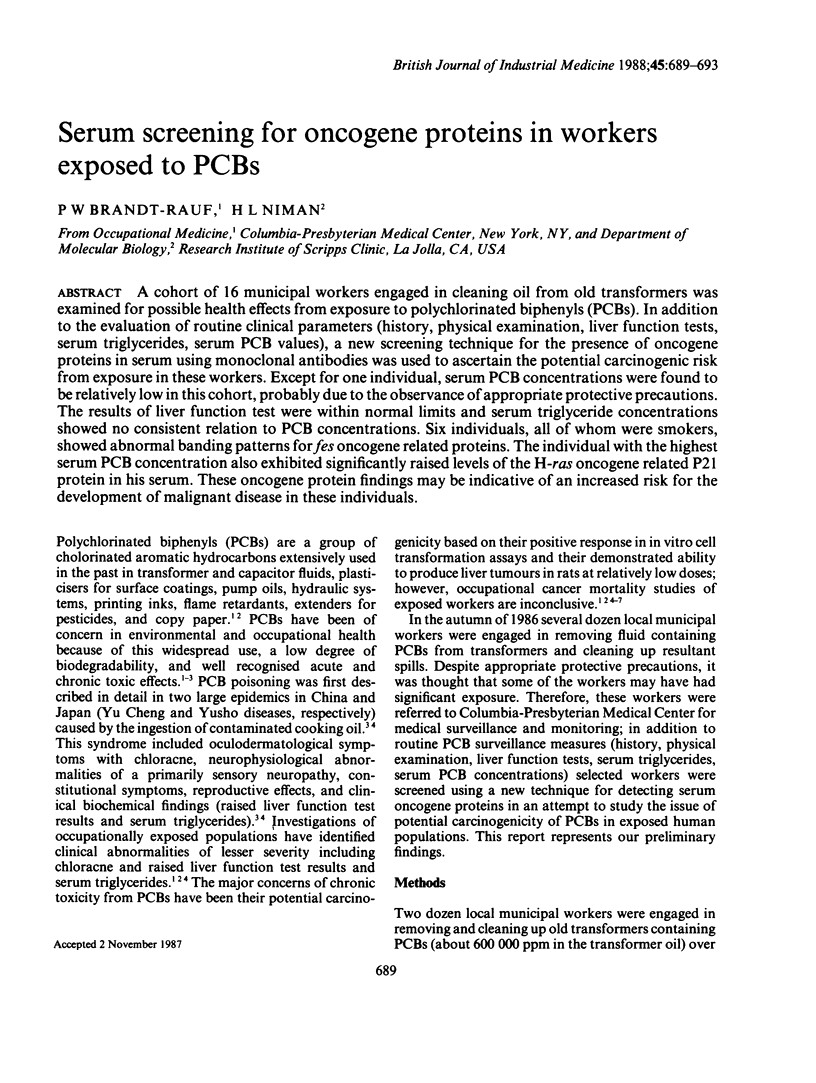
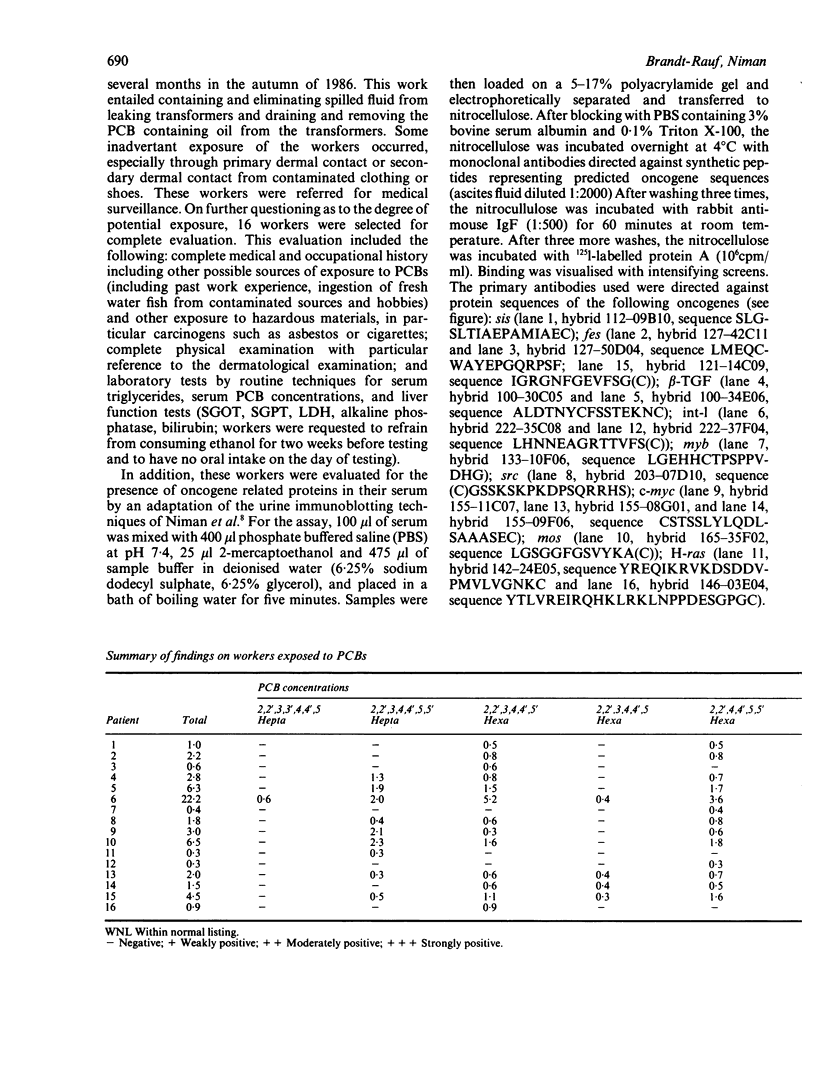
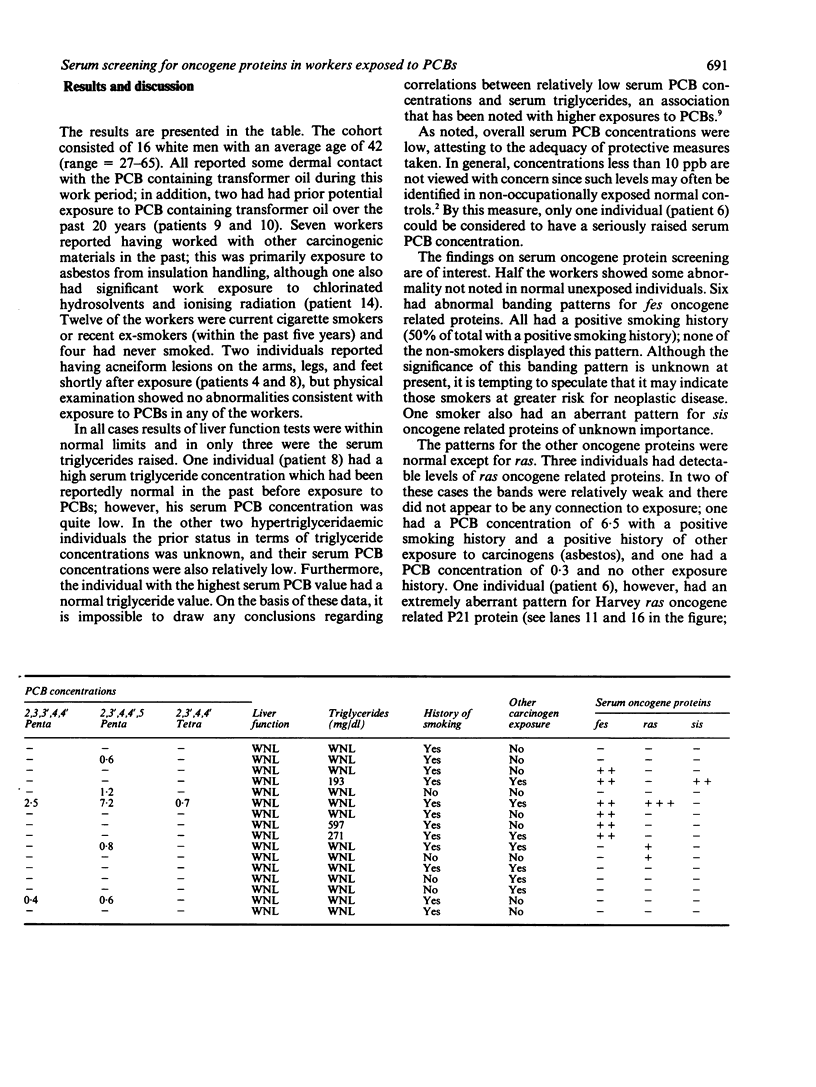
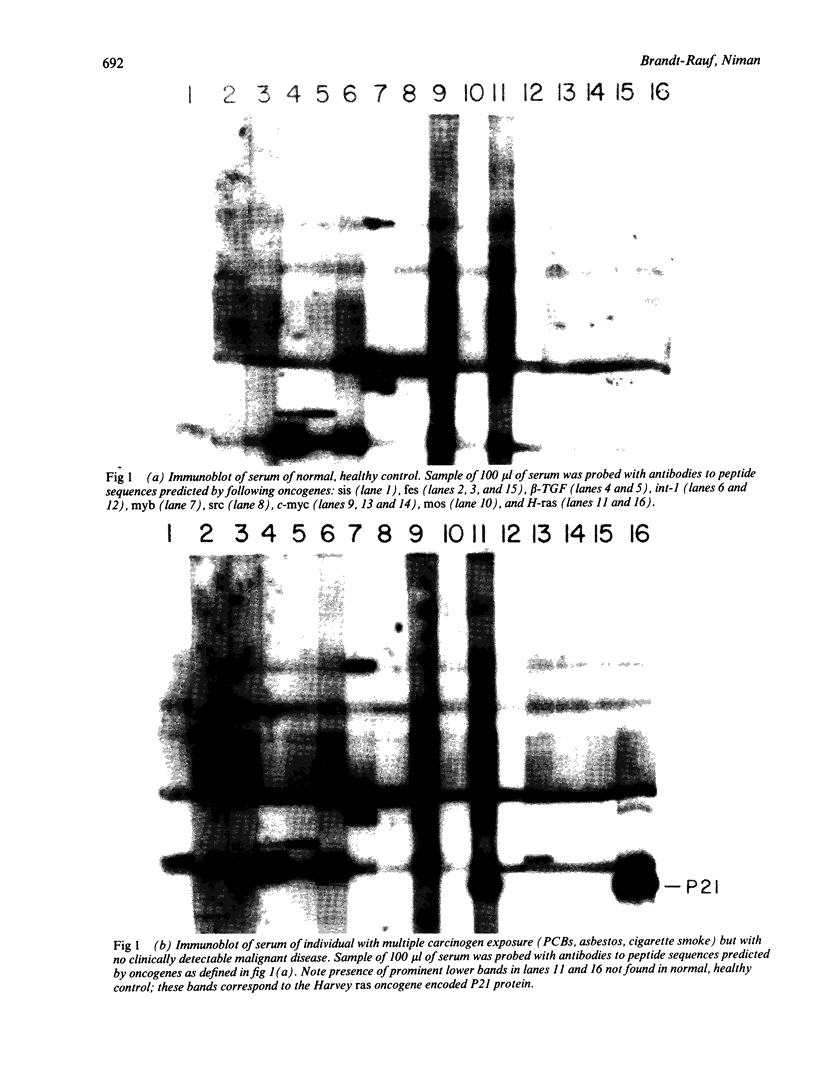
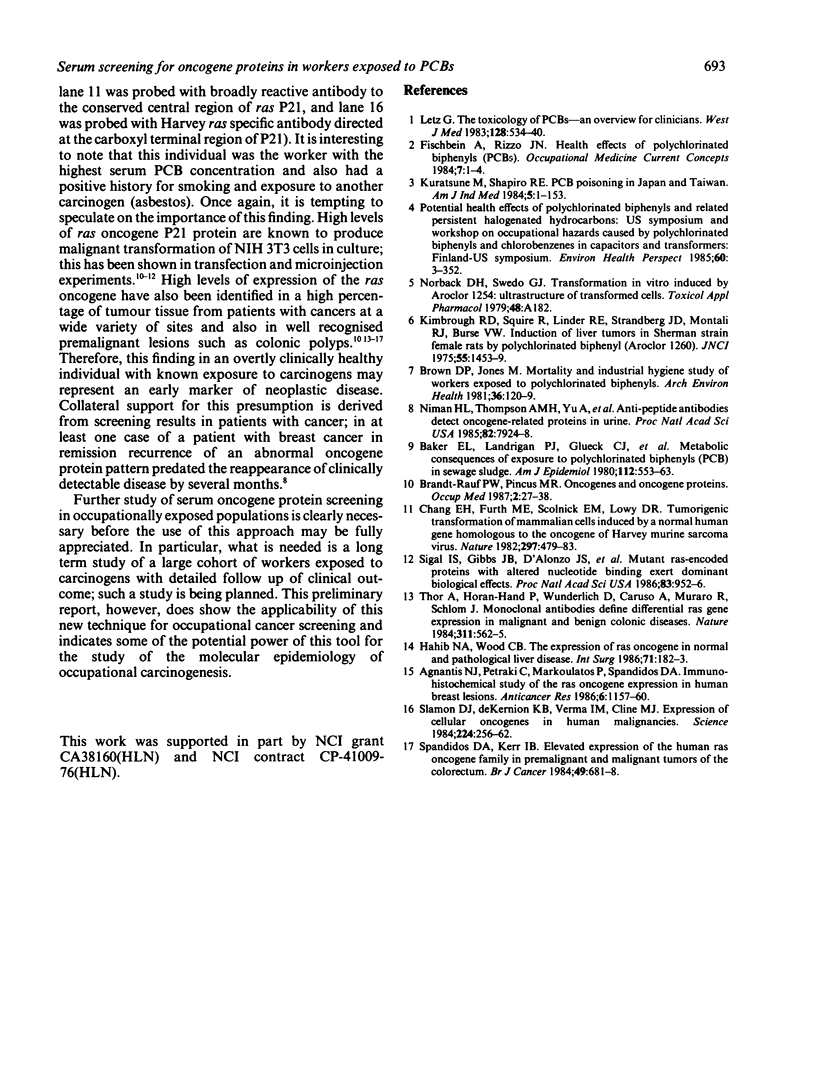
Images in this article
Selected References
These references are in PubMed. This may not be the complete list of references from this article.
- Agnantis N. J., Petraki C., Markoulatos P., Spandidos D. A. Immunohistochemical study of the ras oncogene expression in human breast lesions. Anticancer Res. 1986 Sep-Oct;6(5):1157–1160. [PubMed] [Google Scholar]
- Baker E. L., Jr, Landrigan P. J., Glueck C. J., Zack M. M., Jr, Liddle J. A., Burse V. W., Housworth W. J., Needham L. L. Metabolic consequences of exposure to polychlorinated biphenyls (PCB) in sewage sludge. Am J Epidemiol. 1980 Oct;112(4):553–563. doi: 10.1093/oxfordjournals.aje.a113024. [DOI] [PubMed] [Google Scholar]
- Brandt-Rauf P. W., Pincus M. R. Oncogenes and oncogene proteins. Occup Med. 1987 Jan-Mar;2(1):27–38. [PubMed] [Google Scholar]
- Brown D. P., Jones M. Mortality and industrial hygiene study of workers exposed to polychlorinated biphenyls. Arch Environ Health. 1981 May-Jun;36(3):120–129. doi: 10.1080/00039896.1981.10667615. [DOI] [PubMed] [Google Scholar]
- Chang E. H., Furth M. E., Scolnick E. M., Lowy D. R. Tumorigenic transformation of mammalian cells induced by a normal human gene homologous to the oncogene of Harvey murine sarcoma virus. Nature. 1982 Jun 10;297(5866):479–483. doi: 10.1038/297479a0. [DOI] [PubMed] [Google Scholar]
- Habib N. A., Wood C. B. The expression of ras oncogene in normal and pathological liver disease. Int Surg. 1986 Jul-Sep;71(3):182–183. [PubMed] [Google Scholar]
- Kimbrough R. D., Squire R. A., Linder R. E., Strandberg J. D., Montalli R. J., Burse V. W. Induction of liver tumor in Sherman strain female rats by polychlorinated biphenyl aroclor 1260. J Natl Cancer Inst. 1975 Dec;55(6):1453–1459. doi: 10.1093/jnci/55.6.1453. [DOI] [PubMed] [Google Scholar]
- Letz G. The toxicology of PCB's--an overview for clinicians. West J Med. 1983 Apr;138(4):534–540. [PMC free article] [PubMed] [Google Scholar]
- Niman H. L., Thompson A. M., Yu A., Markman M., Willems J. J., Herwig K. R., Habib N. A., Wood C. B., Houghten R. A., Lerner R. A. Anti-peptide antibodies detect oncogene-related proteins in urine. Proc Natl Acad Sci U S A. 1985 Dec;82(23):7924–7928. doi: 10.1073/pnas.82.23.7924. [DOI] [PMC free article] [PubMed] [Google Scholar]
- Sigal I. S., Gibbs J. B., D'Alonzo J. S., Temeles G. L., Wolanski B. S., Socher S. H., Scolnick E. M. Mutant ras-encoded proteins with altered nucleotide binding exert dominant biological effects. Proc Natl Acad Sci U S A. 1986 Feb;83(4):952–956. doi: 10.1073/pnas.83.4.952. [DOI] [PMC free article] [PubMed] [Google Scholar]
- Slamon D. J., deKernion J. B., Verma I. M., Cline M. J. Expression of cellular oncogenes in human malignancies. Science. 1984 Apr 20;224(4646):256–262. doi: 10.1126/science.6538699. [DOI] [PubMed] [Google Scholar]
- Spandidos D. A., Kerr I. B. Elevated expression of the human ras oncogene family in premalignant and malignant tumours of the colorectum. Br J Cancer. 1984 Jun;49(6):681–688. doi: 10.1038/bjc.1984.108. [DOI] [PMC free article] [PubMed] [Google Scholar]
- Thor A., Horan Hand P., Wunderlich D., Caruso A., Muraro R., Schlom J. Monoclonal antibodies define differential ras gene expression in malignant and benign colonic diseases. Nature. 1984 Oct 11;311(5986):562–565. doi: 10.1038/311562a0. [DOI] [PubMed] [Google Scholar]




